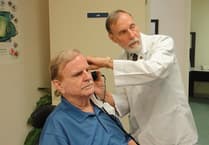The overall time the Welsh Ambulance Service waits to transfer people to staff at the hospital’s emergency department fell by more than 87% in June compared with May and almost three-quarters of people were transferred in just 15 minutes.
A national taskforce has been set up to reduce ambulance patient handover delays across Wales, helping to speed up the transfer of people into emergency departments and release ambulance crews to respond to 999 calls in the community.
But while there have been improvements in June, there continues to be too much variation across Wales.
The latest figures show pressure on emergency care services remains high – June saw the third highest daily attendances at emergency care facilities on record. But the average time from arrival to triage was 16 minutes – the shortest since February 2021.
Health Secretary Jeremy Miles said: “Today’s figures show that our focus on improving ambulance patient handover performance is working, with handover times in June the lowest since September 2021.
“With improvements in same-day emergency care and patient flow in place, significant progress is being made in most areas of Wales.
“Staff across Wales work hard day in, day out, to provide the best possible care for patients and I want to thank them for their continued efforts and the improvements we are seeing.
"We've recently set up a national, clinically-led taskforce to support these efforts and have been clear with health boards about our expectations.
“With changes to how the ambulance service manages 999 calls, it’s important we continue to work to see further progress to ambulance patient handover performance.”
Changes to the way the Welsh Ambulance Service responds to the most serious 999 calls were introduced on 1 July. A new purple category has been created for people suffering from an out-of-hospital cardiac arrest and the red category has been retained for the life-threatening emergencies for people at high risk of cardiac or respiratory arrest, including serious illnesses and trauma.
A new "orange: time sensitive" category for people with clear symptoms of stroke and other serious conditions such as acute coronary syndrome/heart attacks, will come into effect before the winter.
New yellow and green categories for people with symptoms that would benefit from further clinical assessment and access to community alternatives, scheduled transport to hospital or to be discharged over the telephone or at scene, will also be introduced.
The latest NHS performance figures show the longest waits for treatment increased in May, as anticipated.
More than 1,900 people started cancer treatment and more than 14,200 people were told the good news they don't have cancer, as performance improved against the 62-day target in May, increasing to 61.3%.
The Health Secretary added: "It's disappointing to see the longest waits for treatment rise after we brought them down in recent months, but they are 85% lower than the peak.





Comments
This article has no comments yet. Be the first to leave a comment.